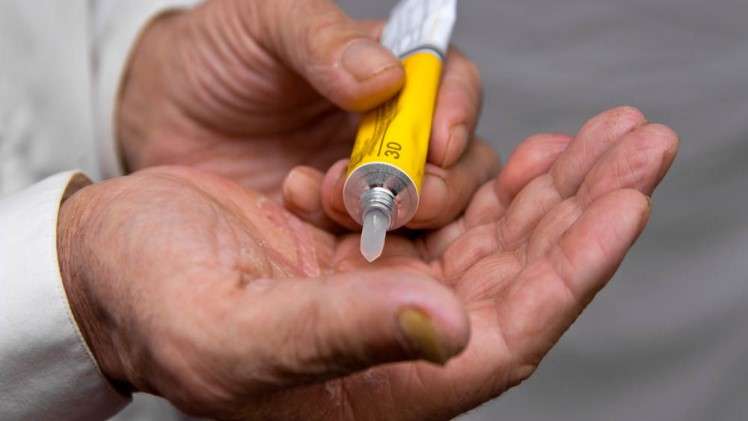Are phimosis creams effective?

Phimosis is the condition when the foreskin becomes tight around the head of the penis and cannot be freely pulled back to its normal position. Phimosis can often occur naturally in young boys and infants but can also occur in adult men due to various reasons. In adult boys and men, phimosis is often triggered by causes such as balanitis (infection under the foreskin) or due to other medical conditions such as diabetes.
Mild phimosis can usually be resolved with stretching exercises and by applying over-the-counter steroid creams for phimosis. Steroid creams can help to soften the foreskin and make it easier to stretch it. Usually, phimosis steroid cream should be applied twice a day to the tip of the foreskin, for about 4 to 8 weeks. Phimosis treatment with steroid creams has shown a success rate of more than 70%. Once you are able to fully retract the foreskin, discontinue the use of the ointment.
Severe or recurrent phimosis often requires a circumcision. In fact, circumcision is one of the most successful treatment options for phimosis in Guwahati.
What to expect with steroid creams for phimosis?
You will be advised to use the steroid cream for phimosis twice a day, for 4 to 8 weeks. After two weeks of regular use, you should be able to gradually stretch the foreskin. Try stretching your foreskin gently once a day to avoid damaging the foreskin. You should only do this after getting your doctor’s approval. Research has shown that steroid creams for phimosis are often successful for mild phimosis. However, the use of steroid creams often needs to be repeated and is not a permanent solution for recurrent or chronic phimosis.
Treatment for phimosis or a tightened foreskin depends on the age of the male, severity, the specific cause and symptoms of the condition. In some cases, phimosis occurs without infection or other disease causing the condition and the tight foreskin is naturally occurring (which is often seen in infants and young boys). Steroid creams are usually recommended for mild phimosis and are very successful in treating the condition. But as discussed earlier, phimosis may occur again and the individual may need to use those steroid creams again.
There are various other treatment options and recommendations available for phimosis. If steroid creams, exercises and hygiene practices are not successful in curing phimosis or if the phimosis keeps coming back, the doctor may tell you that circumcision would be beneficial. Circumcision is the surgical removal of the foreskin and is often recommended for recurrent infections of the foreskin or penis, such as phimosis, paraphimosis, balanitis, lichen sclerosus, etc.
What complications may arise if phimosis does not get better?
If phimosis does not get better or is not treated in time, it can give rise to painful and discomforting symptoms. Treatment for phimosis is necessary and should not be avoided or delayed. If your phimosis is not cured or if it is recurrent (occurs again and again, even after treatment), serious complications can arise. Untreated phimosis can cause serious problems like-
● Obstruction of the urinary stream, which may result in recurrent urinary tract infections (UTIs).
● Balanitis or swelling of the glans of the penis, resulting in pain and discomfort.
● Phimosis increases the risk of transmission of sexually transmitted diseases and sexually transmitted infections such as HIV, HPV, AIDS, syphilis, etc.
● Phimosis often results in paraphimosis, a condition when the retracted foreskin cannot be pulled back into its normal position. Paraphimosis is a medical emergency and should be treated promptly. If not treated, paraphimosis may result in the death of the tissues and rarely, loss of the penis.
● In rare cases, phimosis can lead to penile cancer (cancer on the skin of the penis or within the penis).
● Untreated phimosis can result in permanent damage to the penis.
Thus, it is very important to receive proper treatment for phimosis to stay away from such complications.
When should you seek a doctor’s help for phimosis?
In some cases, phimosis goes away on its own without treatment. This usually happens among young boys and infants. Recurrent infections of the tip of the penis or foreskin should always be evaluated by a doctor. Ideally, you should visit a specialist doctor for phimosis treatment when you first notice the symptoms. If you are experiencing the following signs, you should visit a doctor-
- Changes in the color of the foreskin or glans
- Spots or a rashes on the foreskin or tip of the penis
- Pain
- Tight foreskin
- Irritation or itching
- Swelling or inflammation
If phimosis interferes with urination or healthy erections, or if there are other worrying symptoms, you should see a specialist doctor.
Urologists and surgeons can now perform scar-free laser circumcision in Guwahati. If you are living in Guwahati or its nearby cities, you can undergo the minimally invasive laser circumcision procedure by an expert urologist.





